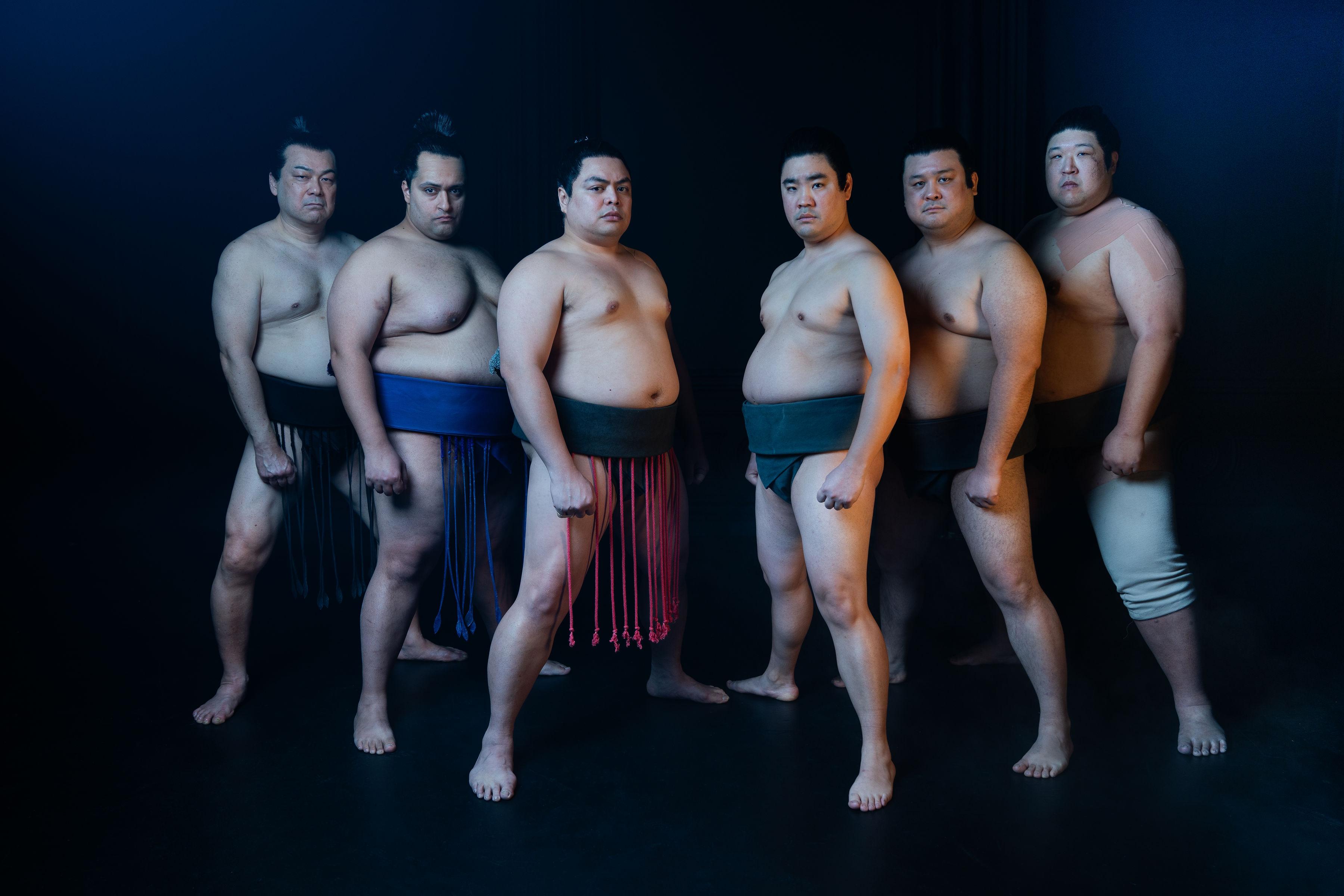Soler, Mona, Isabel, Carina, and Luis Antonio Santos at “To See A Landscape As It Is” in Silverlens Manila. Photo by JT Fernandez
BY Lala Singian
Soler and Mona Santos, alongside their children Luis Antonio, Carina, and Isabel, shatter the stereotype of “legacies,” redefining what it means to be a family of artists through strong individual practices.
Many know the Santos family as a long-familiar fixture in the art world. But they are anything but as static as a “fixture.” The family of artists, with parents Soler and Mona Santos, and children Luis Antonio, Carina, and Isabel, are as consistently dynamic as their art practices and growth.
Having award-winning illustrator, cartoonist, and fine arts painter Mauro “Malang” Santos as their grandfather, and running homegrown West Gallery for 35 years, it might feel like the Santoses are easily boxed in as “a family of artists.” But it never feels like that when you encounter any of the family members or their work, as each of the Santoses—Mona, Soler, Luis Antonio, Carina, or Isabel—stands on their own.
Curated by Nilo Ilarde, “To See A Landscape As It Is” in Silverlens Manila is their first group exhibition since exhibiting collectively 10 years ago, also in Silverlens’ earlier space, with “Gathered Narratives.”
The earlier exhibit featured Soler and Mona collaborating on paintings of nature, as Soler explored geometric abstractions of flora. At the same time, Mona approached flowers surrounding a figure at rest, in distinct methods of chiaroscuro. Luis Antonio showcased shadowy paintings of bony skulls and showed his early hyperrealistic renditions of GI sheets. While sisters Carina worked with collages and found objects, and Isabel was in the early stages of developing her distinct visual language.
The current exhibit title “To See A Landscape As It Is” is a phrase taken from the embedded text in Roni Horn’s minimalist plastic and aluminum sculpture “Thicket No. 1.” Horn took from writings of French philosopher Simone Weil, in a reminder to look at things plainly, as they are, without any distorting filters from society or culture.
In this same view, the five Santos artists now present their works in the same way, without the persistent influence of external factors, demonstrating changes in their styles and mediums, as through the years they have ventured in various directions.
More than a label
Becoming a family of artists was far from being a deliberate plan. It came naturally. Soler recalls in an email interview that there was no intentional effort to raise their children as artists, but rather, it was simply the environment they breathed in. “The house, and even the studio which we shared with Tatay Malang for a long time was always an open area, and the kids were free to go in and out of our workplace, whether to do art, to play, or simply hang out.”
All around the space were art materials and art books. Every day, conversations flowed about art, exhibits, and artists. Family trips were always centered around museums, galleries, and bookstores. “Tatay Malang and Soler enjoyed going to exhibit openings of other galleries and artists, so the kids would meet other artists as well,” Mona says.

An old photo of the Santos Family. Photo from Luis Antonio Santos
“Tatay Malang would paint everyday,” Soler says. “Walang mga waiting for the mood to paint or draw. He was constantly doodling kung walang papel. He would draw on Kleenex boxes or table napkins or maps or whatever he could get his hands on. After that, he would casually hand out those doodles to whoever was closest to him. Whenever we go on trips, we’d bring him along, knowing how much he enjoyed going to galleries and museums and bookstores. He’d bring a couple of sketchbooks and would constantly doodle on them, that by the time we’d go back home, the sketchbooks would be filled with his artworks.”
While many clans prize the concept of “legacy,” the Santos family has no airs about them. For them, the concept of being an artist is approached pragmatically, in a no-nonsense manner, sans the ego and politics that can come with their background.

Soler and Mona Santos stand in front of their collaborative artwork. Photo by JT Fernandez
“At first, none of them seemed to be interested in pursuing art as a career, but somewhere along the line, each one started to be more curious and would ask us, kaya ko ba ‘to? Or can you teach me how to paint? As a self-taught artist myself, I wouldn’t even dare to teach,” Mona shares. “But I would tell them that the materials are there, and they could try for themselves, just like I did. Then they would sometimes come up to Soler with an idea for a work, and they would discuss the process. When we have group shows, we’d ask them to join, and eventually gave them solo exhibits when Soler felt that they were ready. We felt it necessary to make sure that each of the children developed their own style. This was strongly imprinted on us by Tatay, so it was one of the few things to share with them. Otherwise, we didn’t really try to influence them or teach them.”
Carina articulates it most directly. “I’m extremely proud of this unique heritage and the ‘lineage’ I come from, but I don’t think it’s really so relevant and can deter from making art as purely as one would probably want to… Although from the outside, it may be an interesting story, I think internally, if I spent my time thinking about legacy and getting caught up in the politics and complexities of what that means, I just wouldn’t be able to make anything.”

Carina Santos. Photo by JT Fernandez
Her perspective resonates with the rest of the family as well. Her younger sister Isabel echoes the sentiment, stating, “As of now, I think it’s better for me to focus on my own art practice. I believe that it won’t help my art when I’m constantly thinking about legacy and the people that came before me. If I can continue along their path, then it’s a great bonus.”

Isabel Santos. Photo by JT Fernandez
Luis Antonio takes a slightly different approach, focusing on relationships and personal connection. He reflects that legacy is about “establishing and nurturing relationships” and how one integrates with their community. “Tingin ko kung paano ka makibagay sa mga nakakasama mo, tungkol din sa pagkatao mo at kung tugma ba ito sa art na ginagawa mo,” he says.

Luis Antonio Santos. Photo by JT Fernandez
Taking a further stance, Carina notes that while external perceptions might categorize them as a “family of artists,” she finds it more important to concentrate on the work itself, “And, thankfully, we all have our own practices that we’ve all worked hard at cultivating,” she explains.
The Santos’ art practices as individuals
While the Santos family nurtured their artistic practices through gradual encouragement, none of them felt inclined to scrutinize or compare each other’s work while creating their own. As time has passed, “To See A Landscape As It Is” shows how a decade has led to individual evolution and growth.
Soler’s practice has always been inclined to the subtler side of nature, depicting its unnoticed details since his debut solo exhibit in 1981 at 21 years old. His work emphasizes organic textures and processes like decay, steering away from the traditional, bucolic beauty of nature-based scenes. His work for the ongoing exhibit at Silverlens with his wife and children includes 30 crimson-hued assemblages, crafted from gathered materials and organized in grid formations, each measuring 12 by 12 inches in assemblages on wood.

Soler Santos, “Untitled 4 (Red Painting)” 2024, assemblage on wood. Photo from Silverlens

Mona Santos, “Monochrome Blooms IV” 2024, oil on canvas (quadtych). Photo from Silverlens
Meanwhile, Soler’s wife Mona has kept to her interests in light and shadow in her depictions of hyperrealistic flowers. Her oil paintings for the Silverlens show feature fragmented, photorealistic close-ups of tropical orchids in her series “Monochrome Blooms.” Arranged in grids, with discipline and precision, her work is attractive without calling too much attention, rendered with soft gradations that exemplify the interplay of light and darkness.
Soler and Mona also collaborate on two large-scale works that depict both their styles and blend synergetically, in grids that collage photo transfers and painting, as both structured and unstructured elements create a sense of balance.

Soler and Mona Santos, “Untitled 2” 2024, mixed media on canvas, 48 x 71 in. Photo from Silverlens
Luis Antonio explores how painting interacts with other artistic processes, continuing his dramatic experimentations with light and shadow through screenprints lined against one wall, much like his earlier “Fragmentation” works. He now brings this process to linen, using layering techniques, blending brushwork, screenprinting, and rearranging collage-like elements of foliage in a form of repetition, pushing at memory with recognizable foliage that also seem demonstrative of his nearby local environment. “I think my practice still revolves around the same concerns but it has expanded in scale, material and process wherein you can still see the thread that connects it to my past works,” he says. In a plexiglass piece on the far side of the gallery, UV-printed images of houses in flux create a liminal space, exploring dualities within the everyday, and hyperfocused on process and materials.

Luis Antonio Santos’ work “post-site” features UV ink on plexiglass, hanging from a stainless steel frame. Photo by JT Fernandez
While Carina’s earlier works in “Gathered Narratives” a decade ago featured collages and altered photography, since moving to the U.K. she has moved away from figuration to explore different modes of making. “I’ve always believed that all the seemingly disparate tangents life takes you on inform the work that you make,” she says. Roused by the color field movement, Carina has dipped in her hand in creating abstract landscapes. These fluid pools of color start with watercolor washes on paper that she lets gesture, gravity, and material guide the interaction of colors. These then inform her oil paintings with distinct colorations such as “Tilting Planets” and “The Inadequacies of Language.” In the second gallery room dedicated to her work, the multi-disciplinary artist also exhibits a tablescape with sculpture, textile, and printed matter, and even an archival box she constructed herself.

Beyond the tablescape filled with a variety sculpture, textile, and printed matter, Carina’s experimentations with abstractions hang on the wall. Photo by JT Fernandez
Upon entering the gallery, visitors will find an entire room showcasing the drawings of Isabel on the walls. Isabel presents two creative modes: one “methodical and deliberate,” the other, “intimate, visceral,” as her sister Carina writes in the exhibition notes. Her large-scale figurative paintings use pictograms to convey personal narratives with deliberate figurative work. Meanwhile her ink drawings and scribblings show Taiwan’s strange landscape in Yehliu, conveyed in life-size etchings on the wall of the small room in the gallery space—also expressing feelings of suffocation and being overwhelmed, tied to her dealings with mental health, as she is compelled to create.

Isabel’s etchings, reflective of her mental health, transition into large-scale imprints on the wall and floor, complemented by smaller framed works. Photo by JT Fernandez
“To See A Landscape As It Is” goes beyond just being a family reunion on canvas, collage, and sculpture. A decade after their last collective showing, the exhibition acts like a marker to the Santos family’s distinct progression as artists, converging again under one roof.

The Santos siblings. Photo by JT Fernandez
One can only speculate on the interplay of nature versus nurture. Like how father and son, Soler, and Luis Antonio, find common ground in their experimentations with grids and foliage. But while their shared DNA and parentage might have given them a common starting point, their divergent paths—from Mona’s precise study of light and shadow, to Isabel’s raw emotional expressions, to Carina’s abstract explorations—demonstrate how each member of the Santos family has carved their own identity as an artist.
The exhibition title’s reference to seeing things as they truly are feels particularly apt: Here is a family of five artists who, despite their intertwined histories, stand confidently as individual creators with their own truths and lived experiences, each continually contributing their distinctive voice to the contemporary art landscape of the country.
Soler Santos, Mona Santos, Luis Antonio Antonio Santos, Carina Santos, and Isabel Santos exhibit in “To See A Landscape As It Is” from Nov. 21 to Dec. 21, 2024 at Silverlens Makati
Photography by JT Fernandez
Shoot assistance by Angela Chen
Video by Claire Salonga
Special thanks to Angel Stinson and Patrick de Veyra.









